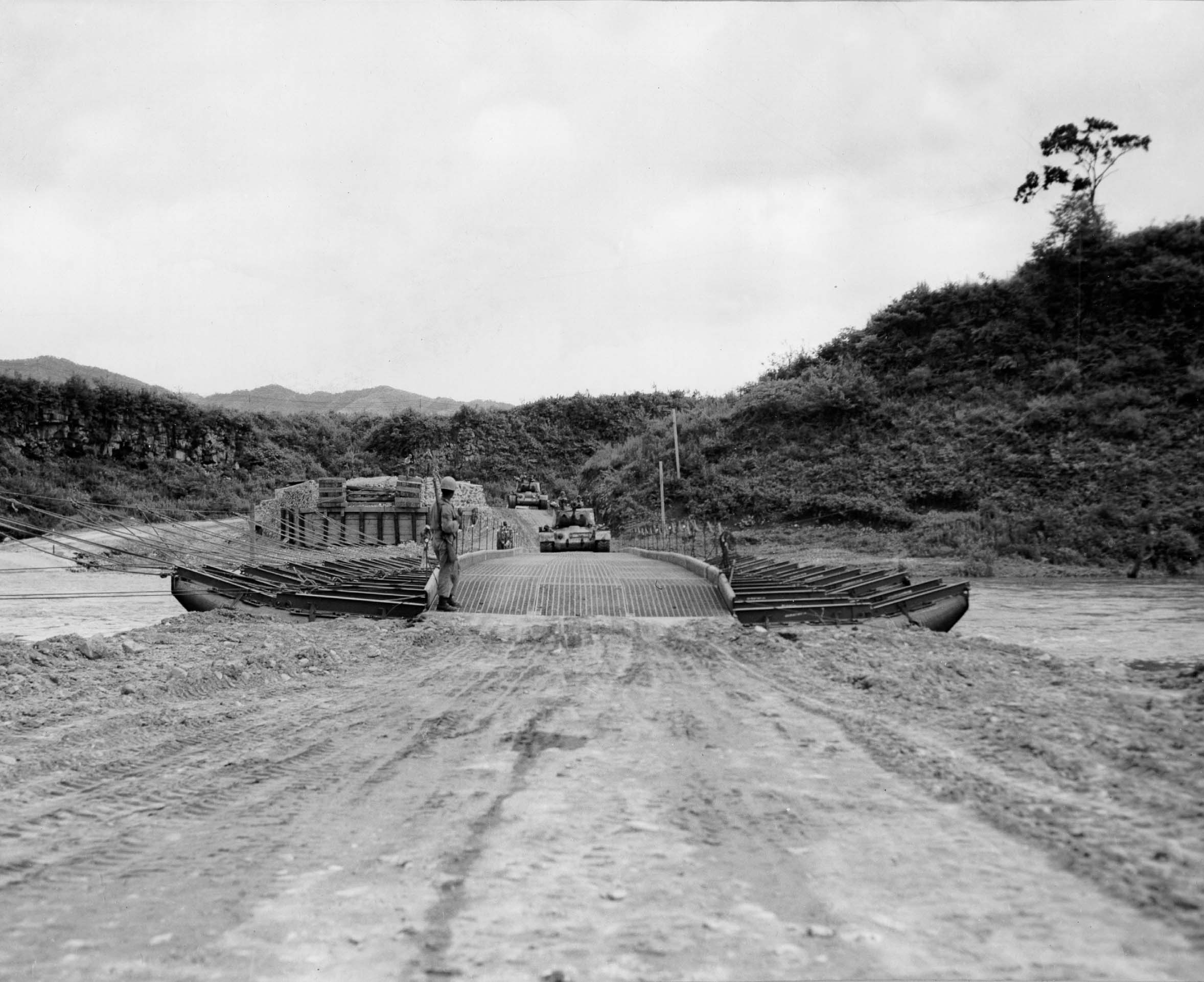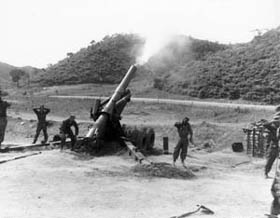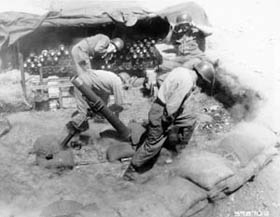
Annotated photograph of OP Harry taken from Artillery Observation Post Howe (Courtesy of James Jarboe)


MIZE, OLA LEE
Rank and organization: Master Sergeant (then Sgt.), U.S. Army, Company K, 15th Infantry Regiment, 3d Infantry Division. Place and date: Near Surang-ni, Korea, 10 to 11 June 1953. Entered service at: Gadsden, Ala. Born: 28 August 1931, Marshall County, Ala. G.O. No.: 70, 24 September 1954.
Citation:
M/Sgt. Mize, a member of Company K, distinguished himself by conspicuous gallantry and outstanding courage above and beyond the call of duty in action against the enemy. Company K was committed to the defense of "Outpost Harry", a strategically valuable position, when the enemy launched a heavy attack. Learning that a comrade on a friendly listening post had been wounded he moved through the intense barrage, accompanied by a medical aid man, and rescued the wounded soldier. On returning to the main position he established an effective defense system and inflicted heavy casualties against attacks from determined enemy assault forces which had penetrated into trenches within the outpost area. During his fearless actions he was blown down by artillery and grenade blasts 3 times but each time he dauntlessly returned to his position, tenaciously fighting and successfully repelling hostile attacks. When enemy onslaughts ceased he took his few men and moved from bunker to bunker, firing through apertures and throwing grenades at the foe, neutralizing their positions. When an enemy soldier stepped out behind a comrade, prepared to fire, M/Sgt. Mize killed him, saving the life of his fellow soldier. After rejoining the platoon, moving from man to man, distributing ammunition, and shouting words of encouragement he observed a friendly machinegun position overrun. He immediately fought his way to the position, killing 10 of the enemy and dispersing the remainder. Fighting back to the command post, and finding several friendly wounded there, he took a position to protect them. Later, securing a radio, he directed friendly artillery fire upon the attacking enemy's routes of approach. At dawn he helped regroup for a counterattack which successfully drove the enemy from the outpost. M/Sgt. Mize's valorous conduct and unflinching courage reflect lasting glory upon himself and uphold the noble traditions of the military service.

This panorama was made from two pictures from Bob Brandon who was on OP Harry in March of '53. He made the shots from the left forward flank of the OP. The view is directly North from that vantage point and shows Star against the sky about 1/3 of the way in from the left margin. The darker ridge leading from Star to the barbed wire below the excavation at the right was one of the routes of approach to the OP for the CCF. A CCF trench can be seen at right center. (Photos courtesy of Bob Brandon as stitched by James Jarboe)
Korea - Photos by James Jarboe

ES42-5-209 (SC434176) Tanks of Co "B", 64th Tank Bn, (90-mm gun), 3rd U.S. In Div, start across newly constructed floating bridge across the flooded Han Tan River. 10 Jul 1953.

M-41 self-propelled 155mm howitzer

Gun crew of a 105mm howitzer in action along the 1st Cavalry Division sector of the Korean battle front.

The MK-II A1 hand grenade commonly used by US forces was of the Defensive (fragmentation) type. This grenade functions on the same principle as all other US grenades by priming the detonator, by releasing the safety catch. The body of the grenade is made of cast iron in a checkered pattern.
The firing system is composed of the safety catch, handle (spoon), the firing pin and the detonator, screwed on the grenade’s top. The safety pin holds the lever down, which in turn stops the striker from hitting the primer. To arm the grenade, the pin must first be removed and the handle held down. On releasing the grenade from the hand, the handle (or spoon) will fly off and a striker will fly down and strike the fuse. Because of its sectional casing, on exploding, the fragments will fly out and vary in shape and size.
Early grenade models were painted yellow but this made them too much of a target, and around late 1942 to early 1943 they were painted olive-drab, with a yellow ring painted on the body next to the fuse.

SC400100 - KOREAN CONFLICT
An 8-inch howitzer is fired by members of Battery A, 17th FA Bn., 45th U.S. Inf. Div., north of Yonchon, Korea. 27 May 1952. Korea.
Signal Corps Photo #10-340-2/FEC-52-14563 (Kassal)

SC398703 - A 4.2-inch mortar crew of the Heavy Mortar Company, 179th Regiment, 45th U.S. Infantry Division, fires on Communist positions, west of Chorwon, Korea. 5 May 1952. Korea.
Signal Corps Photo #10-296-1/FEC-52-13339 (Kassal)